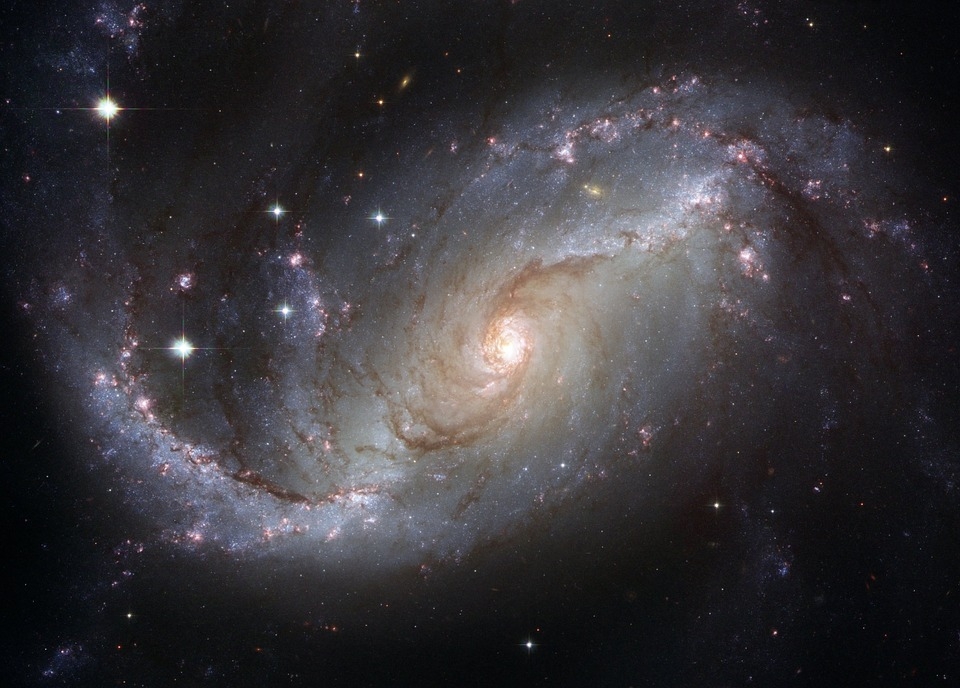When it comes to galaxies, many often hear about these celestial objects merging with one another. However, the opposite is not heard about as much. Recently, the Hubble Space Telescope was able to witness just that, with one galaxy moving away from Earth.
NASA’s and the European Space Agency’s Hubble Space Telescope captured a spiral galaxy named NGC 7513, found 60 million light-years from Earth in the Sculptor constellation. NGC 7513 is seen to be moving away from Earth at a speed of 3.5 million miles per hour or 1,546 kilometers per second, which is 500 times faster than the Earth’s orbit around the Sun, which is at a speed of 30 kilometers per second.
“Though NGC 7153’s movement away from the Milky Way might seem strange, it is not that unusual,” said the agencies.
This is because the universe is continuously expanding, and with the expansion, it would only be natural that many celestial objects appear to be moving away from its current locations. However, it is possible that the distances between galaxies can shrink, especially if they are gravitationally locked onto each other. One example would be the Milky Way galaxy and the Andromeda galaxy, which appear to be moving closer to each other and are expected to collide in 4.5 billion years from now.
Astronomers still have yet to figure out why the universe has such an expansion rate as of late despite the many theories that were presented in the past.
Meanwhile, scientists have found that the Earth’s magnetic field is moving, and according to a new study, it may be moving at a much faster rate than expected. The researchers analyzed the traces of magnetic activity in samples of sediments. Lava flows as well as manmade objects, they found that the magnetic field is moving 10 times faster than what was believed. It should be noted that the Earth’s magnetic field is made from the liquid iron outer core that is spinning around the solid inner core.
According to the University of Leeds geophysicist Chris Davies, “Since these rapid changes represent some of the more extreme behavior of the liquid core, they could give important information about the behavior of Earth’s deep interior.”



 The rising flood of space junk is a risk to us on Earth – and governments are on the hook
The rising flood of space junk is a risk to us on Earth – and governments are on the hook  Why now is the time to address humanity’s impact on the moon
Why now is the time to address humanity’s impact on the moon  What is minoxidil, the anti-balding hair growth treatment? Here’s what the science says
What is minoxidil, the anti-balding hair growth treatment? Here’s what the science says  Customizing mRNA is easy, and that's what makes it the next frontier for personalized medicine − a molecular biologist explains
Customizing mRNA is easy, and that's what makes it the next frontier for personalized medicine − a molecular biologist explains  How do airplanes fly? An aerospace engineer explains the physics of flight
How do airplanes fly? An aerospace engineer explains the physics of flight  Genetic diseases: How scientists are working to make DNA repair (almost) a piece of cake
Genetic diseases: How scientists are working to make DNA repair (almost) a piece of cake  Larger and more frequent solar storms will make for potential disruptions and spectacular auroras on Earth
Larger and more frequent solar storms will make for potential disruptions and spectacular auroras on Earth  The brightest object in the universe is a black hole that eats a star a day
The brightest object in the universe is a black hole that eats a star a day  Black hole, neutron star or something new? We discovered an object that defies explanation
Black hole, neutron star or something new? We discovered an object that defies explanation  Could a telescope ever see the beginning of time? An astronomer explains
Could a telescope ever see the beginning of time? An astronomer explains  Six space missions to look forward to in 2024
Six space missions to look forward to in 2024  The brain is the most complicated object in the universe. This is the story of scientists’ quest to decode it – and read people’s minds
The brain is the most complicated object in the universe. This is the story of scientists’ quest to decode it – and read people’s minds  Spacesuits need a major upgrade for the next phase of exploration
Spacesuits need a major upgrade for the next phase of exploration  Tatahouine: 'Star Wars meteorite' sheds light on the early Solar System
Tatahouine: 'Star Wars meteorite' sheds light on the early Solar System  Why is the universe ripping itself apart? A new study of exploding stars shows dark energy may be more complicated than we thought
Why is the universe ripping itself apart? A new study of exploding stars shows dark energy may be more complicated than we thought 





























